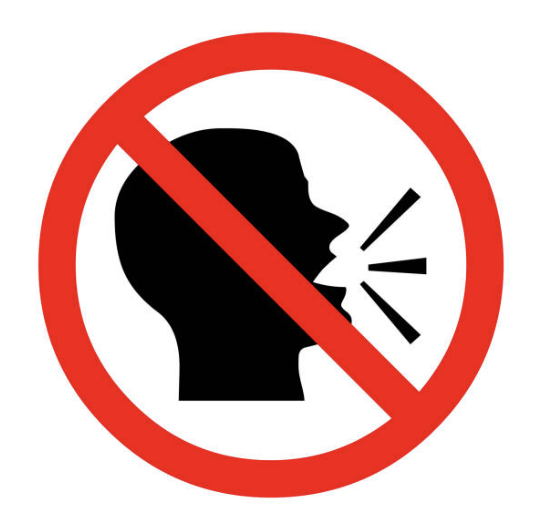Running bamboo is notoriously fast spreading and difficult to remove. What keeps its population balanced in the wild, and prevents it from crowding out the competition? I tried googling, but was inundated with gardening advice, horror stories, and assault / offensive gardening (some of the latter two presumably covering the same incident from both sides). My google-fu failed, I couldn’t really find any info about natural population controls of running bamboo in the thicket of tall tales and gardening advice.
I think an important thing to understand when talking about plant populations is to understand how they compete against each other. all kind of understand how animals compete because its dramatic with claws, fangs, speed and eating. They also compete more subtle with birthing rates, eating all the food faster than others but they are behaviors we can see. Each animal has it own ecological niche which they thrive
Since plants cannot move (mostly true) they compete against animals and other plants in other ways. They use chemicals to poison others, alter the soil for their own needs or attempt to shade out other plants. They also compete in a different timescale than animals. They may only grow for a few months of the year before anything else grows or have a super short reproductive cycle and flower multiple times per year or play the long game and invest into woody structure to grow taller and live longer than other plants. These are their own niches which include everything about temperature (both highs, lows, days at certain temperatures etc.), soil conditions, nearby plants, animals to help or hurt them and timeframes. These are plant’s niches. This means a plant community is never static. It is driven by a process called Ecological Succession
The things about garden and yards is that we don’t have a stable or natural ecosystem which means they are more unstable. We artificially keep it in a early stage of succession with mowing, fertilizers and pulling of weeds. This leaves plenty of open niches for things like bamboo to exploit. That is why pulling or poisoning of weeds just keep coming back since nothing is there to stop it from filling that niche again. So something like bamboo is almost impossible to remove without something else to outcompetes it in its niche. If we did nothing the bamboo would likely take over most of the grass and garden but eventually (in timeframes of years or decades) something else would eventually take it over or others would fill in around it. Usually plants growing creates additional niches alongside it. The succession would take over and alter the ecosystem.
This means that for something like bamboo we should attempt to control it in our garden setting with rhimozone barriers so it doesn’t run wild. Having things like native perennials or other perennials around it should outcompete any newer sprouts can help as well. Moreover, if you have weeds in your garden they will always be there unless you have something else already there. Any bare soil is just open ground for volunteer plants (a.k.a weeds) to take over to fill the empty niche. So to remove something you might not want you need to both pull it and have something else to replace it.
Soil composition, access to water, temperature/seasons, mountains, salt water, etc.
It needs nutrients, water and heat, without access to that it just doesn’t grow or spread fast, or at all. So it can’t cross the deserts on its own. It can’t grow above a certain sea level so it can’t cross the mountains(Pandas regularly have to climb down the mountains to get more access to bamboo)., it can’t use salt water, it can’t grow if it gets too cold for long periods of time and so on. It’s just fast growing in ideal enviroments.
The big horror stories in regards to gardning, isn’t that it throws seeds around and just grows everywhere. It’s that once one seed as taken root, it will start growing rhizomes. Which are similar to roots, except it’s a stem that grows horizontally underground. And famously bamboo stems will grow through most things very quickly. So if you don’t put up a proper root barrier, they will grow across the nearby lawns and start sprouting roots and and shoots.
Bamboo is kind of a tree in this case which is an area I know more about and I think many of these factors would apply to bamboo as well. First forests used to actually be more rare than today before humans came along. Europe and North America was covered by endless plains which were grazed by huge numbers of ruminant animals. Any tree that would try to grow would get grazed before it could grow so tall that the animals couldn’t eat it anymore. That’s why grass thrives in such an environment, it’s practically made to get grazed. Once cut it quickly grows back again. Once ancient humans came along and hunted most of the grazing animals extinct forest suddenly started spreading like crazy until almost the entirety of Europe was forested (which was then to a large extent deforested again after agriculture was invented). Grass simply can’t compete against trees for sunlight. Therefore I would expect less or none bamboo in areas with a huge grazing wild life populations. And I don’t mean animals that would eat the leaves, but the ones that would eat the new seedling.
Another thing that limits trees is moisture. In general the drier the climate the less beneficial it is to be a tree. That’s because deep roots are of no benefit in dry climates (but they are of huge benefit in humid climates during drought). Grass which generally have very shallow roots suck up all the rain before it can penetrate deep into the soil while deep tree roots never get any significant amount of water. Trees handle drought well but constant dryness is very detrimental for them. Dry areas also tend to have wild fires which also hamper trees. It’s simply better to be a grass (if moderately dry) or a cactus like plant if it’s extremely dry.
Another factor is soil conditions. Now I don’t know what soil bamboo prefers but I doubt it’s all soil. Soil can have huge impacts on things like pH and water availability. For example in far Northern Europe where I live you can tell that you are standing on sandy soil if all around you are spruces and pines. If you however see lots of leaf trees you are probably on a silt and clay soil. This is because conifers handle both dry and sour soil better than the local leaf trees which leads to more conifers on sand. Bamboo is probably also limited to a certain soil condition.
I hope that can at least help you develop more theories on why bamboo is not everywhere. Something important to remember is that just because a plant can grow well in a certain location doesn’t mean it will be found there. That’s because plants are always in fierce competition. I bet bamboo if intentionally planted and cared for could thrive in lots more places than its found naturally, but it just happens to not be the best plant in that location, meaning it’s outcompeted over long time scales.
Thank you for this! Outstanding knowledge!
Bamboo is not a kind of tree in the slightest. It is a kind of grass.
Thanks! You’ve been the most detailed and helpful answer.
Bamboo isn’t a magic plant. It requires specific combinations of conditions to grow: the right soils, the right level of water and sunlight, temperatures within their preferred range.
Yes it’s a pain to eradicate when improperly planted and then ignored for long enough. But it’s just a plant that has specific needs like all plants do.
Limiting factors are the reason. If you put a person in a hole and gave them everything they needed to live, except water, they wouldn’t survive long, as an example.
If you broaden your question only slightly from bamboo to bamboo and its close relatives, then it has taken over the world. It’s in the grass family, and in no small part thanks to humans, it’s literally everywhere.
I think it’s probably a combination of animals that eat bamboo and climates/habitats not suitable for bamboo.
The tiki bar industry.
Pandas
They don’t call them Great Pandas for nothing
You should read Semiosis, a sci-fi book about a planet with a lot of bamboo.
It’s an awesome book! I LOVE the angle the writer takes on alien life
It can’t grow on the ocean. Yet.
Because they know what will happen if they try that shit again.
Bamboo rats feed on the underground roots of bamboo plants.
I’m not sure how much of an impact they make, but I can imagine they keep some of the growth in check.there is a lot of native bamboo in all places, so it is resilient and a lot of the times the other stuff can only catch on if its provided a space. it can then go invasive… but thats not what youre talking about
i think a lot of it is just aesthetics and that people don’t like bamboo
Pandas, yo.
Kung fu pandas specifically.
Guardians. Silent watchers. The unsung heroes.
Hungry muthafucka’s.
It is the same as other easily spreading plants. In their native habitats there are checks like diseases and predators. When you move them out of those habitats they can thrive at a new level because of the lack of those things.
Do they eat enough to kill it and the root system off? My understanding is if the roots survive they just keep spreading anyway?
Leaves/shoots are where the energy comes from. If they get destroyed enough the root will die. Usually gardeners just aren’t that patient.
Not only diseases and predators keep them in check, there are also other plants that can effectively compete with them in their native range too
Bamboo is monocarpic (true bamboo at least.). The huge clonal colony flowers once and dies, even below ground. The seeds that fall grow the next generation.
Bamboo species tend to all flower at the same time at the end of a years or decades long cycle. This bottlenecks how much it can spread clonally (underground roots) but gives it another method to spread.
Rats, mice, and other rodents eat the seeds, so there is some ecosystem regulation already
Places with good habitat but no native bamboos like Hawaii have really bad problems with colonies taking over huge areas







